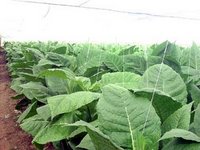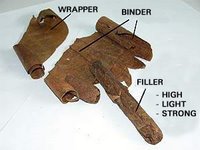

History of Tobacco
by Elvis Valdes, from presentation on 21 March 2006
Tobacco’s origin
Tobacco has its origin in the lands of the Mayan culture which existed from the year 2000 B.C. to 987 A.D. and were located in the states of Chiapas, Campeche, Yucatan, Guatemala and Honduras. The Maya were excellent sailors, since they traded for the whole Gulf of Mexico, including the islands of the Caribbean, like Cuba, the Dominican Republic, Jamaica etc. carrying among other products, Cacao-nut, and Tobacco, which they smoked, and thanks to them, all these islands have in common Mexican tobacco, what the Maya denominated as " CIKAR " which means to SMOKE in Mayan language.
American Indians began using tobacco in many different ways, such as in religious and medical practices. Tobacco was believed to be a cure-all, and was used to dress wounds, as well as a pain killer. Chewing tobacco was believed to relieve the pain of a toothache.
The rite of the “Camulet” or Pipe of Peace was practised by the tribes of the Great American Prairie before the settlers of the distant West got in contact with these cultures.
Brought to Europe
On October 15, 1492 Christopher Columbus was offered dried
Fifty years later the French diplomat Jean Nicot, to whom the plant owes its generic name Nicotiana, introduced it into France, and in 1585 the English sailor sir Francis Drake brought it to England where smoking tobacco became popular among the court members.
Tobacco is mainly cultivated for its leaves that, once cured, are smoked, chewed or sniffed like snuff. The most cultivated species reach between 1 and 3 m height and produce from 10 to 20 alternating wide leaves that bud from a central stem. It contains an alkaloid, the nicotine which is toxic and it can produce alterations in the circulatory apparatus and in the lungs of the human being. On occasions, it has been used as an insecticide.
Rolling Cigars
Historically cigars have been made by hand, using in this process leaves from different parts of the plant and different types of tobacco. The first thing carried out by the cigar roller is to prepare th
 e binder, whose task is to hold the filler which at the same time is the heart of the cigar and contains three different types of tobacco: light, strong and high, coming from different parts of the plant, high, center and low, giving different taste and texture.
e binder, whose task is to hold the filler which at the same time is the heart of the cigar and contains three different types of tobacco: light, strong and high, coming from different parts of the plant, high, center and low, giving different taste and texture.The wrapper leaf is used on the final phase of rolling a cigar; these leaves are chosen with special care, because they should have an unbeatable colour, texture and shine.
It has been proved that the best wrapper leaves of the world are the ones produced in Cuba, because they conjugate harmoniously indicators of presence (extrinsic quality) with very appropriate tenors of chemical components, such as nicotine and others (they constitute the intrinsic quality). In general it is considered that the Cuban wrappers have superior characteristics if we compare them with the best that are produced in other countries.
Health Hazards Revealed
In 1960s in general was a time when much of the health hazards of smoking were reported. The TV cigarette ads were taken off the air in Great Britain, the health warnings on cigarette packs began popping up, the major tobacco companies started to diversify their products buying companies with remarkably different profiles, from beer to aluminum.
During the 1980s many lawsuits were filed against the tobacco industry because of the harmful effects of its products. Smoking in public areas is soon restricted, especially in the work place.
In recent years, there is growing evidence that the tobacco industry knew all along that cigarettes are harmful, but continued to market and sell them. There is also evidence that they knew that nicotine was addictive and exploited this hidden knowledge to get millions of people hooked on this dangerous habit.
The Habano party in Cuba
As a tradition in Cuba, every year distributors, managers, outstanding farmers, artisans and smokers of the best tobacco in the world come together in a party, where participants spend thousands of Euros in a traditional auction of cigar boxes signed by Fidel Castro, normally bought at a price between 50,000 and 250,000 euros and ‘Humidores’ [humidifiers] for a price around 600,000 euros.
In Februar
 y of this year the most recent celebration took place, where Habanos S.A launched a new brand cigar “Cohiba Behike” for the price of 375 euros per unit. The stars of the party this year were the British performer Joseph Fiennes (Shakespeare in Love), and the musicians of Buena Vista Social Club.
y of this year the most recent celebration took place, where Habanos S.A launched a new brand cigar “Cohiba Behike” for the price of 375 euros per unit. The stars of the party this year were the British performer Joseph Fiennes (Shakespeare in Love), and the musicians of Buena Vista Social Club.Images from http://www.guerrillero.co.cu/sitiotabaco/en_inglesh/index.htm.



No comments:
Post a Comment